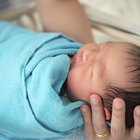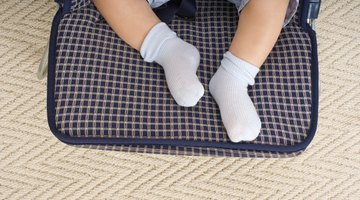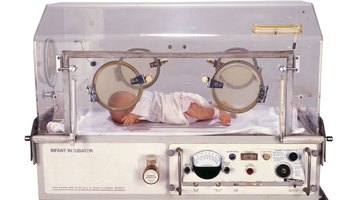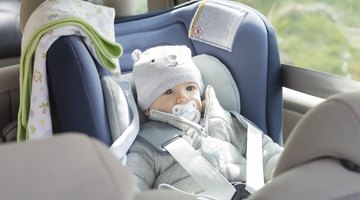Why Babies Must Be Kept Warm
Babies can't regulate their body temperature as effectively as kids and adults because their bodies have more surface area by weight, causing quicker heat loss. Babies also don't have as much insulating body fat, especially sick or premature babies. Keeping babies warm helps them stay healthy and comfortable.
Significance
Babies must expend large amounts of energy to stay warm if they are in a cold environment or dressed inadequately. For example, a core body temperature just one degree below normal requires babies to use 10 percent more oxygen. Babies can't build up energy reserves if they're using too much energy to stay warm, and babies who are sick may take longer to get better.
Keeping Babies Warm

How to Tell if a Baby Is Cold
Learn More
Newborns should be dried immediately after birth to prevent the loss of body heat. Skin-to-skin contact with the mother also helps keep babies warm. Newborns may also be kept warm in an incubator or open bed with radiant warmer, which adjusts the amount of heat based on the newborn's body temperature. After newborns have left the hospital, you can keep them warm with a hat--babies lose large amounts of heat through their heads--and by swaddling them in a blanket.
Symptoms
If you're not sure whether your baby is too warm or cold, check whether her hands feel cold or her skin looks blotchy. This indicates her temperature is too low. If she is restless and has flushed, red skin, she may be too warm. Check her temperature frequently, because she can't tell you if she's too hot or cold. In general, dress your baby how you would like to be dressed for that temperature.
Warning

Air Conditioners & Babies
Learn More
Make sure your baby's bedding doesn't increase his risk of suffocation or sudden infant death syndrome, also called SIDS. If possible, swaddle your baby or dress him warmly instead of using loose blankets. Place your baby on a firm mattress, not a pillow or quilt, and always place him on his back.











